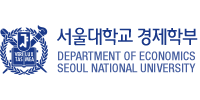Essays on health insurance
일시: 2023년 04월 06일 목요일 11:30~12:30
발표자: 최윤지 (석박통합과정 수료)
발표제목: Essays on health insurance
장소: 우석경제관(223동) 307호
본 세미나는 대면으로 진행될 예정입니다. 세미나 후 간단한 점심(김밥, 샌드위치 등)을 가져가실 수 있도록 마련해 놓을 예정입니다.
궁금하신 점은 박예지(qhfmaekf1352@snu.ac.kr)조교에게 메일 부탁드립니다.
주최 : 서울대학교 경제학부, 경제연구소 한국경제혁신센터, SSK
Abstract
Chapter 1. This chapter examines the cost containment effect of prospective payment scheme (PPS). Cataract surgery at clinics had been deemed an overtreated procedure and, hence, its payment scheme was switched to PPS (in the form of diagnostic- related group, DRG) in 2012. I find that the adoption of DRG led to an approximately 10% decrease in inpatient expenditure without any unintended consequences such as quality trade-offs, spillovers, or upcoding. Its cost containment effect could amount to 40 billion KRW per year. However, I find that such effect only lasted 4 years and conclude that the cost containment from reduced expenditure at intensive margin is offset if not overwhelmed by the dramatic increase at extensive margin, which is likely related to private insurance-induced demand.
Chapter 2. This chapter generalizes the effect of the DRG adoption in Korea. DRG was adopted in 7 surgical procedures in 2012 at clinics and 2013 at hospitals. I repeat the analysis in chapter 1 using inpatient expenditure and process quality as outcomes, and find that DRG did not work in any other cases and even led to process quality trade-offs in some cases. The success of DRG (in terms of cost containment) depends on two dimensions: the generosity of DRG price; and the share of non-medical care. DRG only works when a strict DRG price was adopted in procedures that had high share of non-medical expenditure from the beginning.
Chapter 3. This paper examines the zero-price effect in universal health insurance in a value-based insurance design (VBID) framework. Medical Aid is a public health insurance in which approximately 3 percent of the low-income population is enrolled, and it had been provided in two forms: type 1 with zero copayment; and type 2 with higher copayment. In July 1, 2007, a copayment ranging from 500 to 2,000 KRW was imposed in Medical Aid type 1. I find that the small amount of copayment reduces medical utilization. I then investigate the heterogeneity across treatment in the VBID framework.
